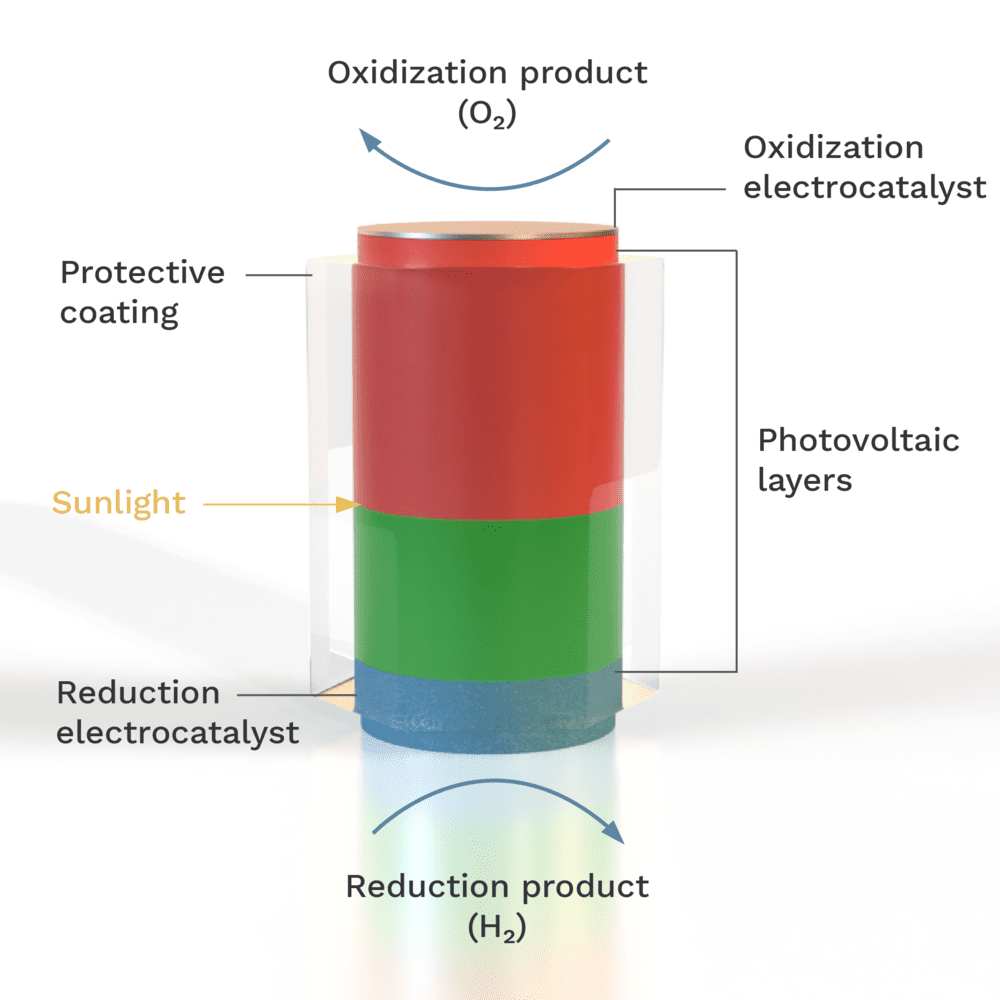Hydrogen is a clean and abundant source. Currently, however, most production processes have a strong environmental impact. What's now? SunHydrogen is developing a revolutionary technology to generate green hydrogen using a special solar panel.
The PAH process
The startup has created special photovoltaic panels that take advantage of the process PAH (Photoelectrochemically Active Heterostructure). A process that, to put it briefly, is based on the electrolysis of water on a nanometric scale.
Each square centimeter of the solar panel contains billions of Hydropanels nanoparticles, with dimensions in the nanometer range. These are in turn made up of hundreds of very thin layers. Layers in which the electrochemical reaction to split water molecules occurs.

To deliver hydrogen, the solar panel becomes electric at night
The PAH process directly exploits solar energy, with an optimized photovoltaic effect at the interface of the nanometric layers. If desired, as mentioned, this solar panel can also work at night. Maybe connected to renewable electricity sources.
It does not require expensive electronic components and the water does not require pre-treatment. It also works with waste or brackish water.
The panels have an operational life of over 20 years and each can deliver 50-100 liters of hydrogen per day. The declared efficiency is 30%, higher than traditional electrolysers.
Industrialization stage
After testing prototypes in the laboratory, SunHydrogen began collaborating with another company, Cotec, to develop the industrial production of the panel with the support of German partners.
PAH panels allow you to obtain green hydrogen in a sustainable way, avoiding emissions. They can be used in plants of any scale and the direct process cuts costs.
SunHydrogen solar panel: conclusions
In summary, this company is taking decisive steps towards totally clean hydrogen production. The technical data confirm the potential of PAH technology, which could soon revolutionize the energy sector by providing a renewable source for a carbon neutral future.
Further confirmations may come from the industrialization phase of this solar panel, but on balance the assumptions are extremely promising. Good luck!


